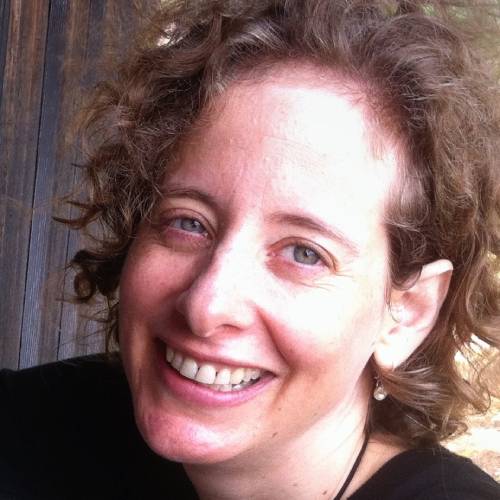The annual ONE-SIM Outreach Award recognizes research on sustainability that reaches broader audiences. 2022 Award finalists share six tips for outreach.
When Mark DesJardine published his research on activist hedge funds in 2020, he knew he wanted his findings to be shared outside academia.
His research showed that activist hedge funds caused long-term damage to companies and stakeholders. DesJardine and co-author Rudy Durand wanted workers, managers, and investors to know about the findings.
“The impact of activist hedge funds is something I care deeply about,” said DesJardine. “I see it as a problem in practice that investors can come in and have all this power to redistribute resources to their own benefit, and basically screw a bunch of stakeholders.”
The researchers’ outreach succeeded. Their findings had broad impact, with international news coverage and use by stakeholder groups like the Communications Workers of America. Today, the article has one of the highest scores for research impact (“Altmetric”) of articles published in Strategic Management Journal.
For these efforts, DesJardine and Durand won the 2022 ONE-SIM Outreach Award, given by two divisions of the Academy of Management. The Award recognizes management scholars working on sustainability who effectively communicate their insights to broader audiences. The Network for Business Sustainability has been a partner of the award since it began.
Lessons from Outreach Award Winners
Emilio Marti, one of the Award’s coordinators, recently spoke with DesJardine about his outreach efforts and what other researchers might learn. Marti also spoke with the Runners-Up for the 2022 Outreach Award: Dror Etzion, Emmanuel Kypraios, and Bernard Forgues.
Etzion and colleagues were recognized for their work on catastrophe bonds. The bonds are a form of financial securitization that aims to spread the risk of a large disaster. Unfortunately, the researchers found that the bonds rely on faulty models, based on historical data that don’t apply to emerging challenges like climate change or pandemics. The research has been used by the United Nations, World Bank, European Commission and others working on disaster risk.
Watch short videos of Marti’s discussions with those recognized by the Outreach Award in 2022, and read their tips for effective communication.
1. Decide if the Article Deserves Outreach
Not every article needs broad outreach. Different topics matter to different audiences. “If you don’t have a question that people will care about, that’s a real problem, and I think academics struggle with this in general,” said DesJardine.
DesJardine’s outreach on behalf of this article stemmed partly from his personal commitment to the topic. “I had genuine motivation,” he says, reflecting on his “long history” of work on the effect of short-term thinking on sustainability. “This article probably gets at that tension better than any other research I’ve published.”
2. Make the Message Clear
The “Practical Implications” section requested by many academic journals can be a place to sharpen the message for external audiences. In writing that section, DesJardine says, “I think about the audience of the paper, whether that’s managers, or regulators, or investors, and then I write to each of these different audiences.” He aims to share the text directly in his outreach efforts.
Different formats can also be helpful. Academy of Management Discoveries (AMD), which published the work on catastrophe bonds, provided data visualization services for Etzion and colleagues. “We spent quite a few hours with their data lead, talking about how to make the main findings of our analysis easy and simple to understand, and also compelling visually,” recalls Kypraios. The researchers then used those images to pitch the research to media outlets. “Once you have that hook or that kind of formulation, it’s easy to duplicate and send it out to other outlets, said Etzion.
Making articles publicly available – instead of behind a paywall – is also valuable. DesJardine and Durand paid for their article to be open access. Etzion and colleagues negotiated with AMD to have the data visualization freely available. “When we say we want our findings to be more accessible, I think a lot of journals actually get it,” says Etzion.
3. Find (and Connect with) Contacts
“Our outreach strategy was to reach two main audiences, the media and practitioners,” says DesJardine. Both are important: journalists spread the word, while practitioners apply the knowledge.
Media: The media relations departments at DesJardine’s and Durand’s universities used their ties to get the research to some journalists. But DesJardine and Durand also reached out themselves, especially where the university didn’t have contacts. DesJardine recalled: “Literally I put ‘Reuters hedge fund activism’ into Google and said, ‘OK, who is the journalist who wrote on that’ and contacted her.”
Practitioners: To get their research directly to practitioners, DesJardine and Durand applied for awards given by industry, such as the FIR-PRI Finance & Sustainability Award. They also contacted potential users of the information: for example, a law firm that issues memos on corporate governance.
Not everyone responded to the outreach. “You have to be okay with the rejection and silence,” said DesJardine. But enough did. The law firm shared the research with 10,000 clients; the Reuters journalist now talks to DesJardine regularly.
4. Stay True to Nuance
Journalists often push for a sharp, definitive conclusion. But academic analysis thrives in nuance.
“The [media] system likes to have clearer takeaways than what we are often comfortable with,” notes Etzion. Most people want a “yes or no” conclusion: “Is this a good idea? Is it a bad idea?”
By contrast, says Kypraios, “We wanted to promote some healthy skepticism. It wasn’t ‘Catastrophe bonds are bad or good.’” Their message was: “When we are talking about pursuing the Sustainable Development Goals, to what degree can we trust financial innovation? What needs to be developed? What should we be aware of?”
The goal is to help people understand the complexities and nuances of difficult issues. Etzion expanded on this approach in a paper with Joel Gehman: “Going Public: Debating Matters of Concern as an Imperative for Management Scholars”
5. Appreciate How the Media Works
The media often have an acute need for academic expertise on issues of the day. The research on catastrophe bonds was published just before the pandemic, and one form of catastrophe bonds is pandemic bonds. This created an immediate opportunity to link academic research and real events. “When COVID struck,” Etzion explained, “we were easily able to take our findings and understandings from the study and translate them into something immediate and useful.”
Attention also came for a lighter reason – the peculiar charm of the term “catastrophe bonds.” “The name of this topic is very catchy, I find,” said Etzion. “These two words – ‘catastrophe’ and ‘bonds’ — don’t often find themselves together. I think people said, ‘Oh, that must be something interesting.’” Journalists were willing to make more effort: “to learn a little bit more in order to try to report on this topic.”
6. Put in Effort – and Create Meaning
DesJardine’s outreach on behalf of his article took 40 hours, he estimates. For him, it’s time well spent. Writing an article takes one to four years; outreach helps the work get the attention it’s due.
“I think about how am I going to focus my effort, what do I really care about?” said DesJardine. “It’s about making it a priority.”
The rewards are tremendous. “You’re actually being interviewed about your research instead of always the other way around as an academic,” said DesJardine. “Then seeing that online, in the New York Times, or in Reuters… And practitioners like the Communications Workers of America reach out to you after that. They would never have looked up and read an academic article.”
“You really feel that your research matters,” said Kypraios “It’s rewarding to see organizations that influence policy-making globally, such as the UN Office for Disaster Risk Reduction, Tweeting about the work. Or having the World Bank interview us for the development of the first-ever monitoring and evaluation system for the disaster risk financing and insurance program..”
Outreach also leads to new perspectives. “It’s gratifying to engage in the bigger marketplace of ideas than that of academic circles,” said Etzion. “Working with media also helps me refine my own thoughts, distill them to their essence, and develop effective ways of communicating that can then be channeled back to academic writing.”
More About the Award
The ONE-SIM Outreach Award is given annually and the deadline is April 30. Find out about past winners and consider applying!
Outreach Resources
Interviews with past award winners (videos from ONE-SIM Outreach Award)
How to Translate Research on Business Sustainability (webinar and guide, from Impact Scholar Community and NBS)
How to Get More Attention for Sustainability (video and summary from journalist conversation, at Sustainability Centres Community Workshop)
How to Translate Research Without Dumbing It Down (article by Garima Sharma)
To Impact Management Practice, Change Research Practice (video, article, and infographic by Garima Sharma and Tima Bansal)



Add a Comment
This site uses User Verification plugin to reduce spam. See how your comment data is processed.This site uses User Verification plugin to reduce spam. See how your comment data is processed.